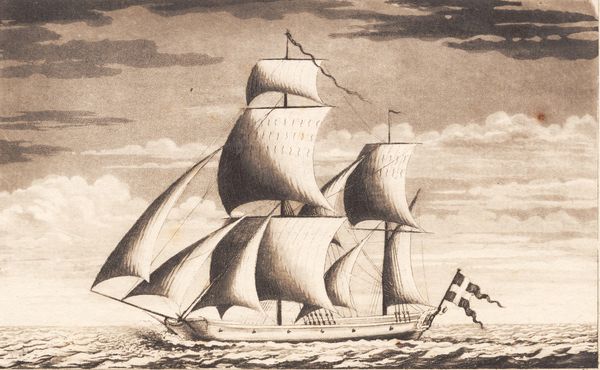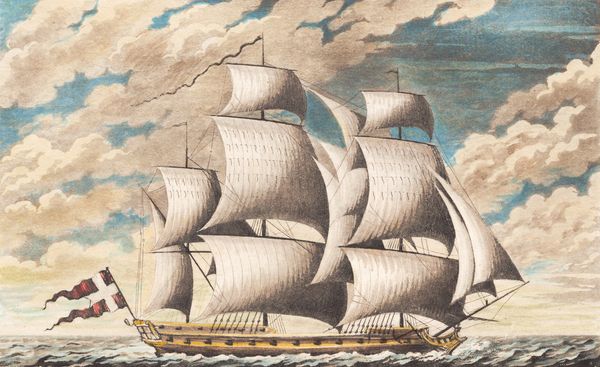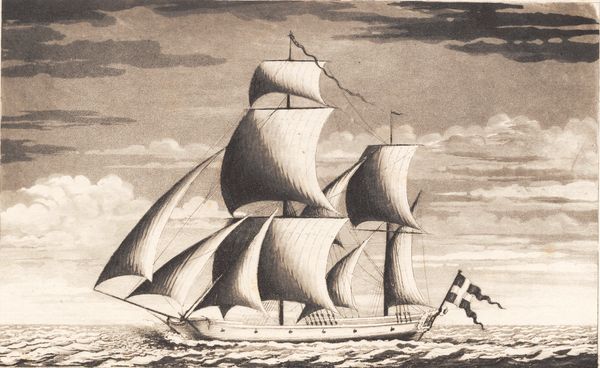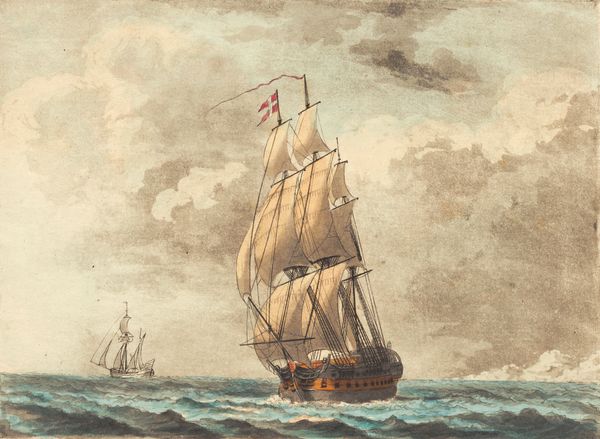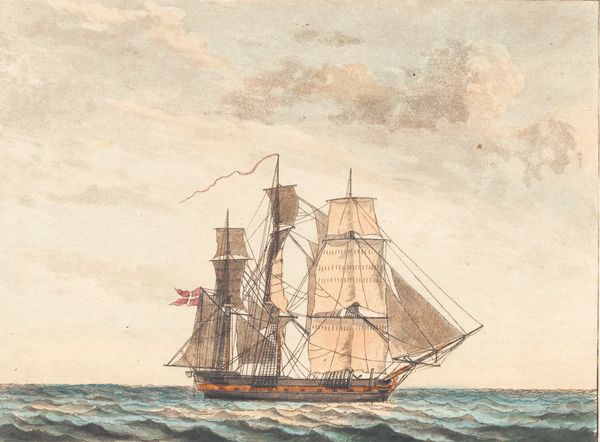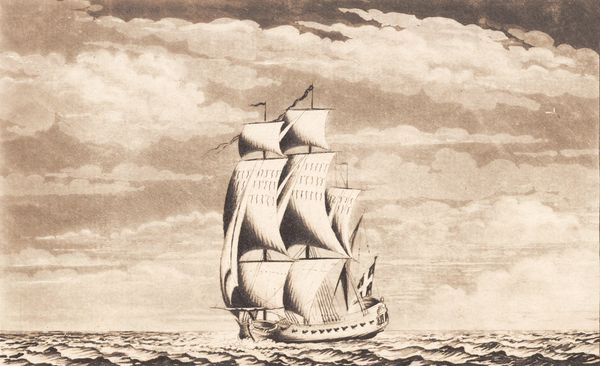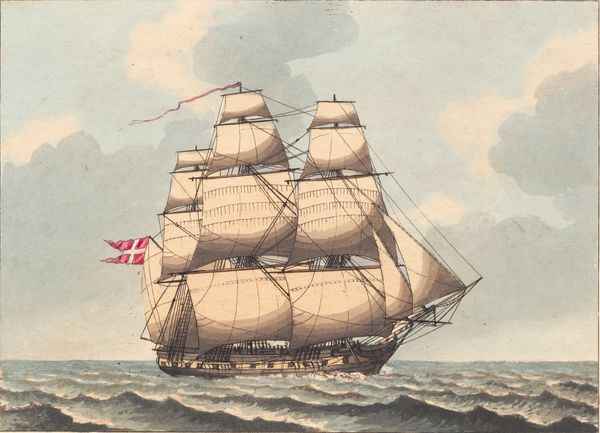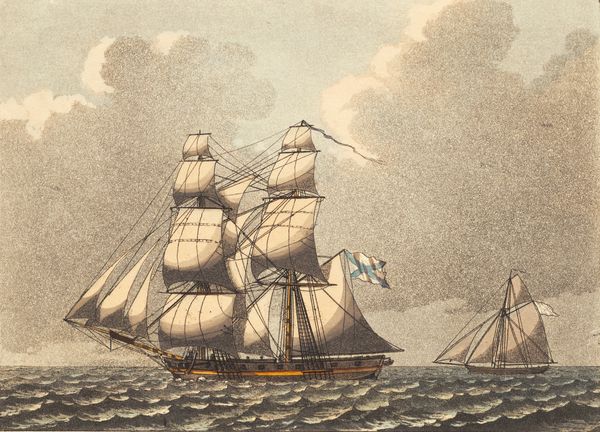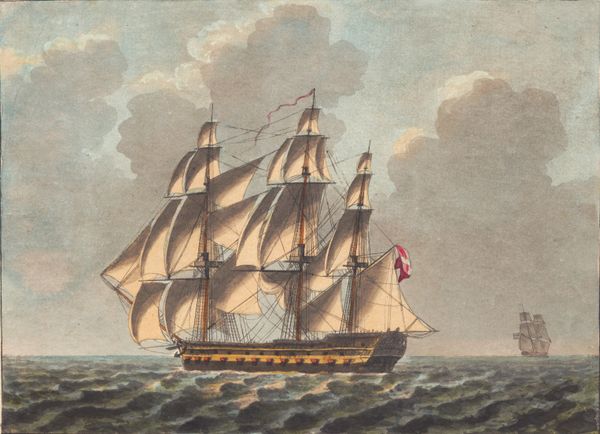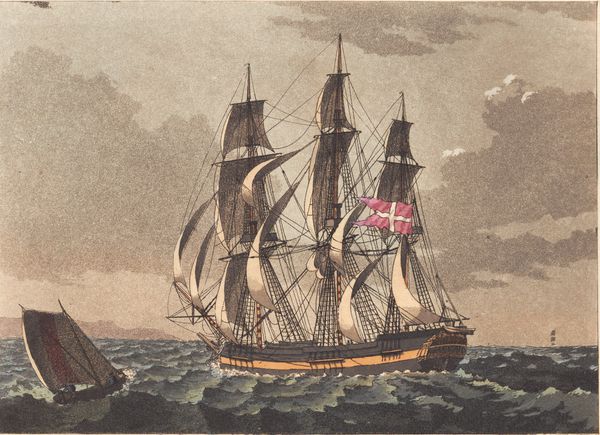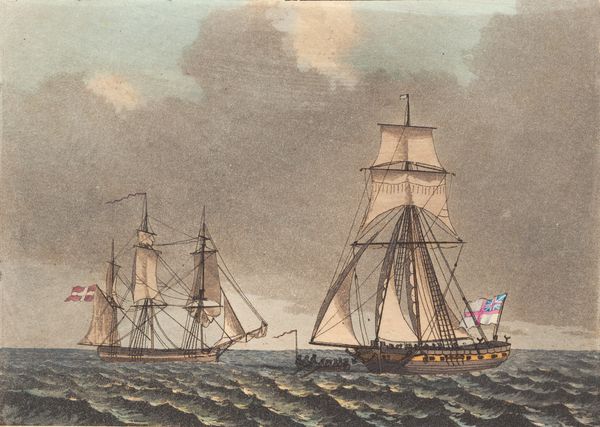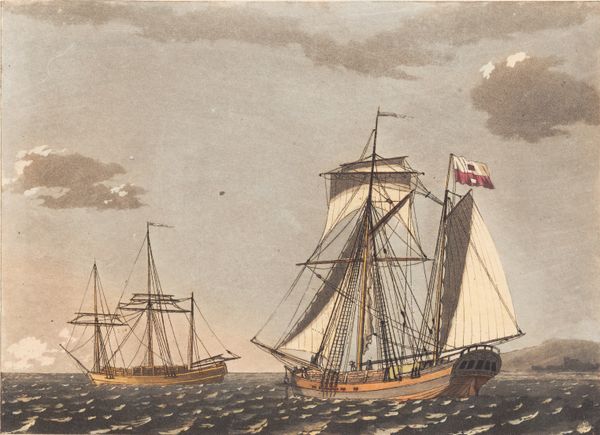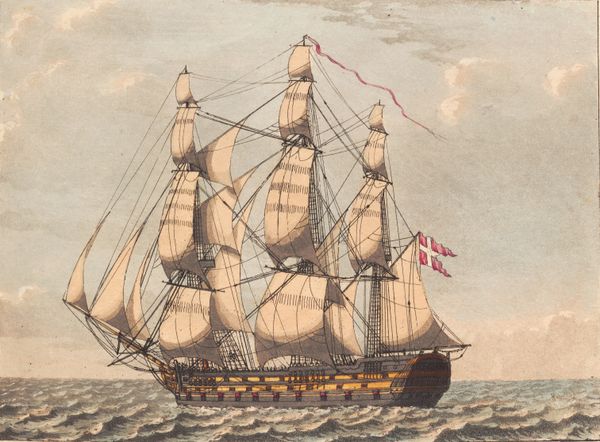
aquatint, drawing, coloured-pencil, print
#
aquatint
#
drawing
#
coloured-pencil
# print
#
landscape
#
coloured pencil
#
orientalism
#
genre-painting
Dimensions: 134 mm (height) x 190 mm (width) (bladmaal), 115 mm (height) x 170 mm (width) (plademaal), 93 mm (height) x 152 mm (width) (billedmaal)
Curator: Ah, here's an intriguing work. It’s titled "Suite af skibe," which translates to "Suite of Ships," and it’s by J.F. Clemens. Though dated from 1748 to 1831, it seems to encompass Clemens' working life. The media are quite interesting too – a combination of aquatint, drawing, and coloured pencil, finalized as a print. Editor: It's serene. And deceptive. The crisp lines of the ship against that gently mottled sky—like a dream trying to sharpen into reality. I feel a longing, but also a calmness. Does that even make sense? Curator: Perfectly! Let’s dive deeper. Aquatint is key here – a printmaking technique using acid to create tonal effects. Think about the labour invested; a process of meticulously etching, stopping out areas, and repeated bitings to achieve the gradations of light and shadow. It elevates what might seem like a straightforward maritime scene into a complex meditation on craft. Editor: And the coloured pencil softens everything, lending it this almost fantastical feel. Almost like a ship in a storybook. But thinking about it practically, someone had to manually add that colour. Was this for sale? Or was it a labor of love, to imagine it come alive? I'm obsessed with the slight awkwardness where the colour meets the aquatint. Makes me wonder about the artist’s hands. Curator: That touch is essential. Prints circulated widely, embodying developing networks of commerce. Consider the demand for images depicting national identity and global trade – the Dannebrog waving there situates this piece within broader geopolitical currents and commercial aspirations. This print functioned, most likely, as a collectible commodity celebrating Danish maritime power. Editor: Oh, of course, the Danish flag! It’s easy to romanticise and miss the bigger, more obvious signals. Still, look at those clouds—are they building into something? Are we safe at shore? All those small aesthetic choices hint at things to come. I think a feeling, the anxiety of trade winds. Curator: Well said. So often these seemingly quaint genre scenes are interwoven into complex economic narratives and material processes. We are right to question labor, production, context. Editor: It brings to mind how much beauty lies in simple materials pushed to their limit and their own story to tell. Thanks to it, this seemingly humble print has grown enormously for me.
Comments
No comments
Be the first to comment and join the conversation on the ultimate creative platform.
